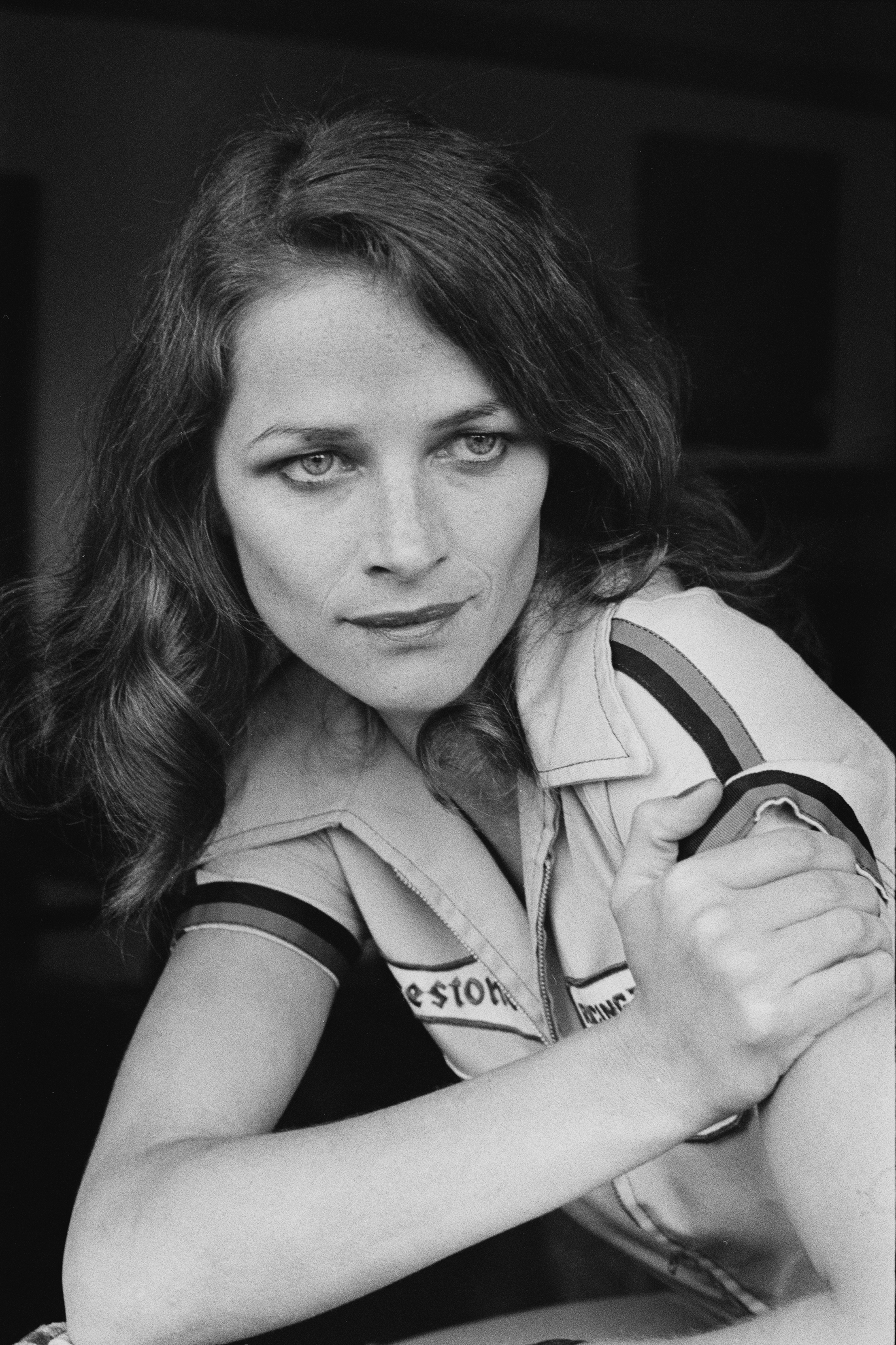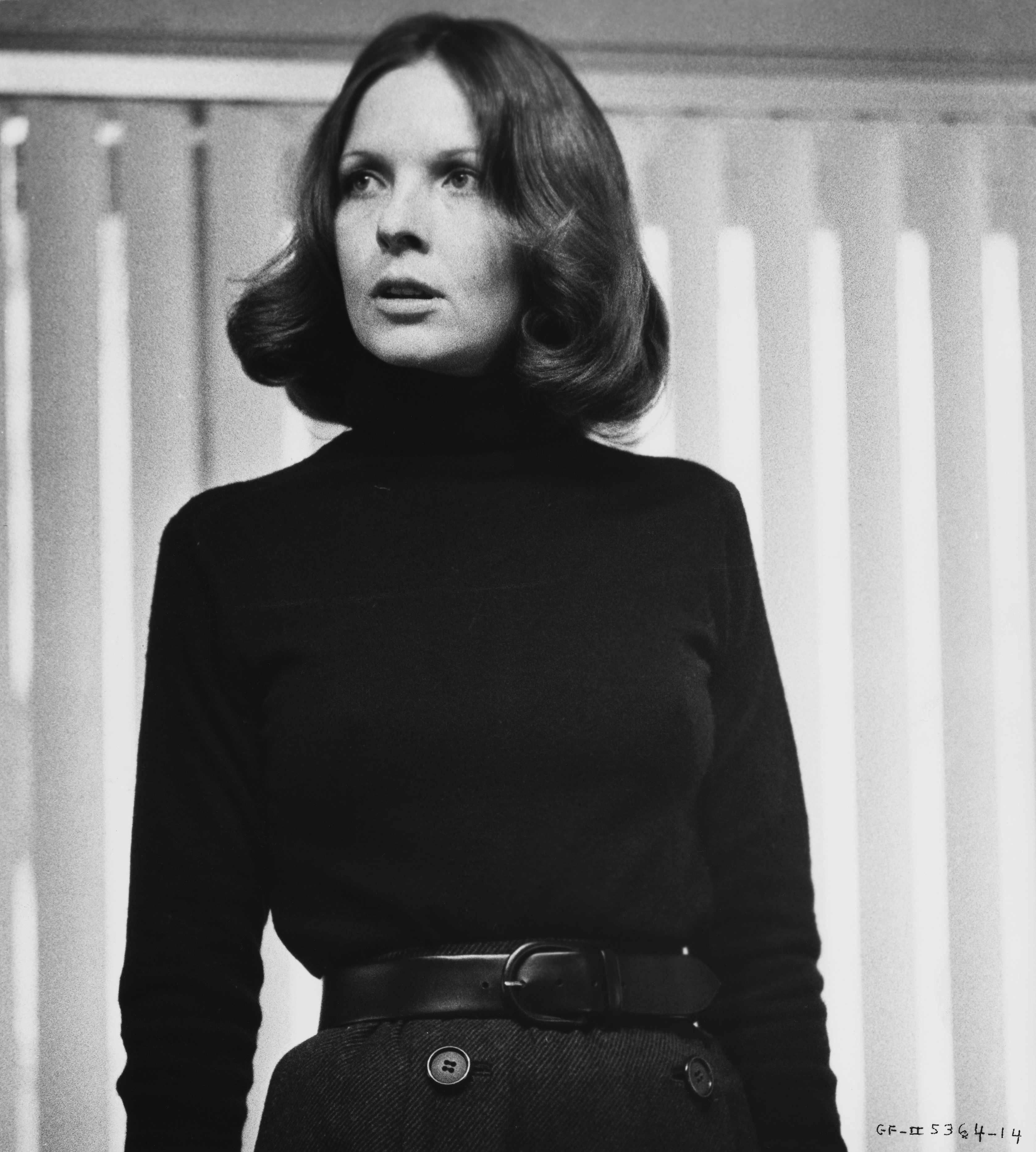
Of recent decades, the 1970s were probably the most experimental—in fashion, film, television, music, and culture as a whole. Vogue would even declare in the early '70s: “There are no rules in the fashion game, now.” The innovators in these spaces (some of whom you'll read about on this list) were making art that had sometimes literally never been done before—from David Bowie's androgyny to Blondie's feminine rock energy. Their impact had a long ripple effect, and many of these continued to be relevant into the 1980s and beyond. If you're just learning about some of these icons for the first time, prepare to go down the rabbithole. If you love the '70s, get ready for a fun walk down memory lane.
Below, 32 icons of the 1970s whose influence can still be felt today.
Halston

The American designer impacted fashion in immeasurable ways, from the pillbox hat Jacqueline Kennedy wore to his clientele (Elizabeth Taylor, Lauren Bacall, and Liza Minnelli, among others) to his ready-to-wear lines. The impact he made in the fashion world can still be felt today.
Patti Smith

The poet and punk rocker's first album debuted in 1975, and from there, The Patti Smith Group grew in popularity and released several albums with hit songs (including "Because the Night" in 1978). She would go on hiatus in the '80s and return to public creative life in the mid-90s.
Charlotte Rampling

It's hard to believe that Charlotte Rampling got her start in the '70s—she was active into the 2020s, including the 2021 film Dune—but she actually began her career as a model in the '60s, and starred in The Night Porter and Zardoz in the '70s.
Pat Cleveland

Pat Cleveland helped break barriers in the modeling world, becoming a favorite of prominent designer Halston and becoming one of the first Black models to do runway (couture modeling) and print (advertising modeling). She also started life as a designer!
Blondie

Debby Harry, a.k.a. the lead singer of Blondie, influenced both music and fashion. Her trademark blonde hair, often worn in a piece-y, asymmetric way, and her chic style were a bit at odds with her rock style—which was a deliberate choice, to show she could be just as talented in the field as a woman.
Donna Summer

The so-called "Queen of Disco" had an iconic number of hits over her long career. If you don't necessarily know her name, you're still familiar with her music: "On the Radio," "Love to Love You Baby," "Last Dance," and "I Feel Love," just in this decade alone.
Stevie Nicks

In the mid-1970s, Stevie Nicks would join Fleetwood Mac and help catapult them to stardom. She also popularized a boho style, from her long frizzy hair to her shawls and chunky boots, from her long jewelry to her lace shawls. It was a unique style, and everyone wanted to emulate it.
Cheryl Tiegs

Sometimes referred to as "the first supermodel," Cheryl Tiegs had a sweet-yet-sexy vibe that magazines loved to capture—and nowhere was she more beloved than Sports Illustrated, becoming the first model to grace their cover twice (which, back in the day, meant you had won the modeling Olympics).
Jerry Hall

One of the most popular models in the '70s, Jerry Hall popularized the "tall blonde look" that would be trendy in the fashion world for at least a decade (she has dozens of magazine covers to prove it). She was also known for being Mick Jagger's partner during this time, but she's much more than just a plus one.
Anjelica Huston

If you're only familiar with Anjelica Huston from her modern movie roles (from The Witches to the Addams Family films—and even the third John Wick movie!), you're missing the whole first act of her life, where she worked as a model—becoming a favorite of Halston's—and dated Jack Nicholson.
Diane Keaton

The much-lauded actor had two of her most major roles—back-to-back performances in The Godfather and The Godfather Part II—as well as collaborations with Woody Allen during this decade. She also started honing her trademark style, consisting of blazers, cool hats, and scarves.
Jane Seymour

Jane Seymour has continued to act into the 21st century (Wedding Crashers, Friendsgiving) but her breakout role was as psychic Solitaire in the James Bond film Live and Let Die. Her '70s bohemian style—and that looong hair—also made her instantly iconic.
Joan Jett

Joan Jett was cool before the rest of us. Her choker necklaces, mullet-y haircut, graphic tees, and leather jackets could honestly be emulated (and are emulated) today. The "I Love Rock and Roll" and "Cherry Bomb" singer had the look to go with her trademark vocals.
Diane Von Furstenberg

The founder of the wrap dress in the 1970s (and we all thank her for it!), Diane Von Furstenberg had just gone through a divorce from Prince Egon von Fürstenberg (whom she remained friends with and who vocally supported her career). The invention launched her career as super-successful fashion designer.
Grace Jones

There's no one like Grace Jones. The singer-songwriter, model, and actor wasn't just known for her role as a Bond Girl in A View to a Kill, or her trademark androgynous style that magazines loved. Her unapologetic, completely unique aesthetic has been an inspiration for decades.
Bianca (and Mick) Jagger

Obviously Mick Jagger had a huge impact on both music and style (particularly with his playful androgyny), but his wife Bianca—whom he was married to between 1971 and 1978—was a fixture in the New York social scene at the time. Think: Warhol, Halston, Studio 54, and a white horse.
Beverly Johnson

The first Black model to appear on the cover of American Vogue, Beverly Johnson has had a long and fruitful career. She began modeling in the '70s, and has literally hundreds of magazines to her name. (She also changed the modeling industry to be more inclusive!)
Joni Mitchell

Although she was particularly influential as a folk singer in the '60s, Joni Mitchell's impact was still strong in the '70s (and, frankly, every decade after). The chameleon was always evolving her style, and in this decade began integrating jazz into her style and changed her vocal range.
Sophia Loren

Sophia Loren helped to popularize the idea of the bombshell (alongside contemporary Marilyn Monroe) and had the maximalist style to go with it: from princess gowns to pin-up curls and pricey jewels. She was also a "curvy" forerunner before its more modern popularity.
Pam Grier

Pam Grier, total legend, was the queen of action and blaxploitation films in this decade. Her most notable role was that of Foxy Brown, which Quentin Tarantino would later draw from when he utilized Grier in his '90s crime film Jackie Brown (if you're only familiar with Grier with her '90s work—check out her earlier stuff).
Andy Warhol

If you know anything about art, you know Andy Warhol. Much of the pop art he's known for was made in the 1960s, but he still wrote The Philosophy of Andy Warhol in this decade and also became a night life regular at Studio 54—one of the most popular New York clubs to ever exist.
David Bowie

Bowie, who constantly evolved his look, spent the early 1970s in his alien prophet "Ziggy Stardust" era (with "Starman" gaining particular popularity). His costumes are literally considered works of art, and that androgyny that was so shocking at the time changed the industry forever.
Farrah Fawcett

It might be hard to believe, but Farrah Fawcett was only on one season of Charlie's Angels (she would later guest star). But her sweet preppy look and her gorgeous, feathered blonde hair instantly became the look everyone wanted to emulate at the time.
Iman

Unbelievably, supermodel Iman only had her first assignment (at Vogue) in the mid-1970s, but her career would skyrocket in this decade. She was the muse to many a designer, and her presence in magazines and on runways would help innovate in the fashion industry.
Olivia Newton John (and John Travolta)

Obviously you were important to the culture too, John! But Olivia Newton John's style in the film Grease (including her early, buttoned-up styles but especially her final all-black, red lip, teased hair outfit) had a ripple effect on style into the '80s and beyond—people still wear Sandy costumes now!
Aretha Franklin

The Queen of Soul, Aretha Franklin recorded several hit albums in the 1970s, won several Grammys, made a return to gospel (most notably with Amazing Grace), and had an end to her time at Atlantic Records—where she would go on to greater heights in the coming decades.
Liza Minnelli

While it would have been interesting enough to be "Judy Garland's daughter," Liza Minnelli was fully on her way to EGOT status in the 1970s (she would win the coveted title in the 1990s). With an Oscar for Cabaret, and a Tony for The Act, it was a prolific and important decade for the singing icon.
Faye Dunaway

Faye Dunaway had a huge impact on movies—in particular fashion trends inspired by movies—and had been doing so since Bonnie and Clyde in the 1960s. It was her performance in the neo-noir Chinatown (which earned her an Oscar nom) and it's classic, elegant fashion that inspired fans in this decade.
Cicely Tyson

Cicely Tyson took the acting world by storm in the 1970s, from an Academy Award nomination for Sounder to nominations for the show Roots. Thus, a long, fruitful, boundary-breaking career was begun, and she'd be a joy to watch for decades. (Fun fact: She also reunited with Miles Davis in this decade.)
Jane Fonda

This was a big year for Fonda, from two Academy Awards to several big hit films, including Fun With Dick and Jane, by the time she made 9 to 5 in 1980 she was basically one of the most acclaimed actors of her time. (This was also the decade of her controversial trip to Hanoi.)
Jane Birkin

Granted, her signature Birkin bag wouldn't be made until the 1980s, but Jane Birkin had a huge influence on fashion and culture in the 1960s and 1970s. She met her partner Serge Gainsbourg in the late '60s, and they were collaborating in controversial films and albums together—plus, Birkin had her own career, including films like Death on the Nile.
Diana Ross

Ross left the Supremes in 1970 and debuted her solo album that year (including the instant hit "Ain't No Mountain High Enough")—and it was the start of an influential decade for the superstar. With a film career and several album releases, plus a gorgeous signature style, she was headed to icon-dom.







